Italian cuisine is a symphony of flavors, traditions, and regional specialties. Far beyond pizza and pasta, it’s a culinary journey that reflects the country’s rich history and diverse landscape. Let’s uncover 15 intriguing facts that showcase the magic of Italian food.
15 Facts About Italian Food (One Line)
- Regional Diversity: Italian food varies drastically from north to south.
- Pasta’s Ancient Roots: Pasta predates tomatoes in Italian cooking.
- Pizza’s Humble Beginnings: Pizza started as a simple flatbread for the poor.
- Tomatoes: A New World Gift: Tomatoes weren’t used in Italy until the 16th century.
- More Than 600 Pasta Shapes: Italy boasts an incredible variety of pasta types.
- Olive Oil is King: Olive oil is the lifeblood of Italian cuisine.
- Cheese is a Staple: Italy is home to hundreds of unique cheeses.
- Gelato vs. Ice Cream: Gelato has less fat and air than ice cream.
- Coffee Culture: Italy has a distinct and cherished coffee culture.
- “Al Dente” Perfection: Pasta is cooked “al dente” (to the tooth) for ideal texture.
- Freshness is Key: Seasonal and local ingredients are highly valued.
- Meals are an Event: Eating in Italy is a social and leisurely experience.
- Bread is Sacred: Bread is always present at the table.
- Simplicity Shines: Many iconic dishes use a few high-quality ingredients.
- World Influence: Italian cuisine has shaped global food trends.
1. Regional Diversity:
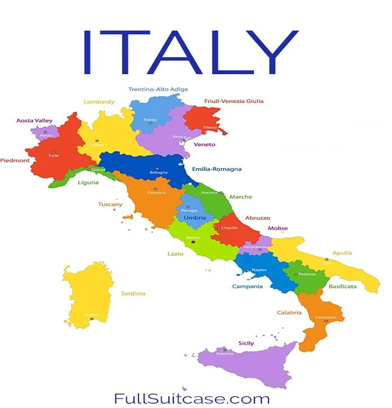
Italy’s boot shape isn’t just a geographical quirk – it’s a map of diverse flavors!
- North: Up north, it’s all about rich and comforting dishes. Creamy risotto, made with Arborio rice simmered in flavorful broth, is a staple. You’ll also find hearty meat stews like osso buco, a slow-cooked veal shank that melts in your mouth. Polenta, a cornmeal porridge, is another northern favorite, often served with cheese or mushrooms.
- Central: In the heart of Italy, fresh pasta takes center stage. Think carbonara (a creamy egg and cheese sauce with pancetta), amatriciana (a spicy tomato sauce with guanciale), and tagliatelle al ragù (wide noodles with a rich meat sauce). Simplicity is key here, with just a few high-quality ingredients creating unforgettable flavors.
- South: The southern regions are known for their vibrant and sun-kissed cuisine. Seafood is abundant, whether it’s grilled swordfish, fried calamari, or spaghetti alle vongole (pasta with clams). Sun-dried tomatoes add a burst of sweetness, while chili peppers provide a fiery kick. Don’t miss the eggplant parmesan, a baked dish layered with eggplant, tomatoes, mozzarella, and Parmesan cheese.
2. Pasta’s Ancient Roots:
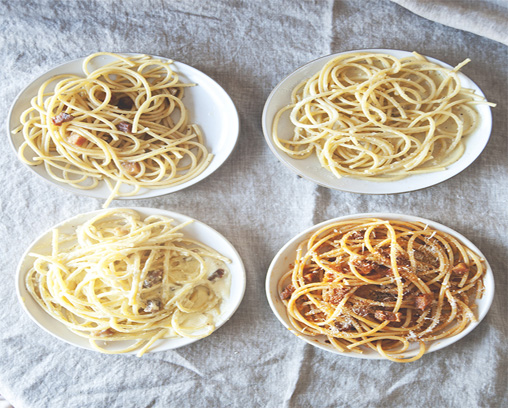
Forget Marco Polo – pasta has been around way longer than tomatoes! Archeologists have found evidence of pasta dishes dating back to ancient Rome, where they were made from simple grains and water. These early noodles were likely baked or boiled and served with simple sauces like olive oil and herbs.
3. Pizza’s Humble Beginnings:

Before pizza became a global sensation, it was a humble street food in Naples. Busy workers needed a quick and affordable bite, and pizza fit the bill. A simple dough topped with garlic, olive oil, and anchovies (small, salty fish) was all it took to create a satisfying meal.
Read More: 15 Weird Food Combos You HAVE to Try
4. Tomatoes: A New World Gift:
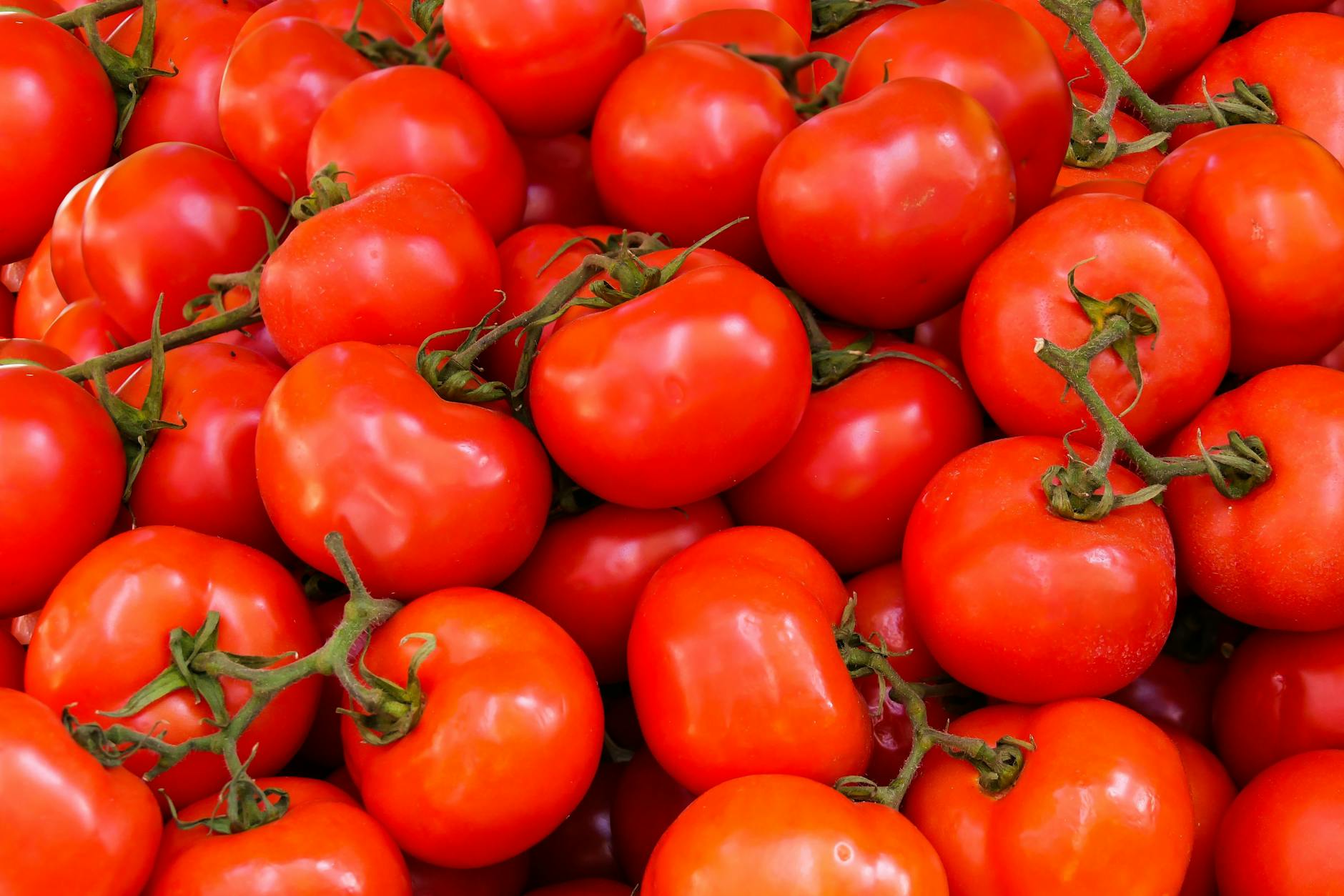
The tomato is actually a newcomer to Italy! It was brought over from the Americas in the 1500s. At first, people were wary of these brightly colored fruits, thinking they were poisonous. But eventually, they discovered their deliciousness and began incorporating them into sauces, salads, and countless other dishes. Tomatoes are now an essential part of Italian cuisine, adding sweetness, acidity, and vibrant color to their food.
5. More Than 600 Pasta Shapes:
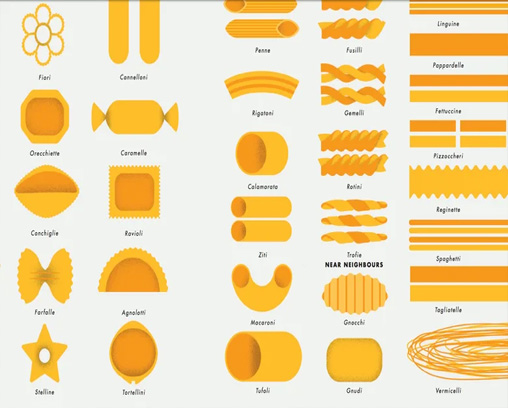
Pasta isn’t just spaghetti and penne. In Italy, there are over 600 different pasta shapes, each with its own unique purpose. Some shapes are designed to hold thick sauces, while others are better for light and delicate ones. Long, thin noodles like spaghetti are perfect for twirling around a fork, while tube-shaped pasta like penne can trap bits of meat or vegetables in their hollow centers. It’s a world of pasta possibilities!
6. Olive Oil is King:

In Italian kitchens, olive oil isn’t just an ingredient – it’s the heart and soul of their cuisine. It’s used in almost every dish, from drizzling it over salads and vegetables to sautéing onions and garlic to create a flavorful base for sauces.
The quality of olive oil is incredibly important to Italians. They favor extra virgin olive oil, which is made by cold-pressing olives without the use of heat or chemicals. This preserves the delicate flavor and aroma of the olives, resulting in a rich, fruity oil that adds depth and complexity to dishes.
Beyond cooking, olive oil is even enjoyed on its own. A common way to savor it is by dipping crusty bread into a small bowl of oil, often seasoned with a sprinkle of salt and pepper. This simple combination highlights the pure, delicious flavor of the oil.
Read More: Top 15 Weirdest Foods That Will Blow Your Mind
7. Cheese is a Staple:
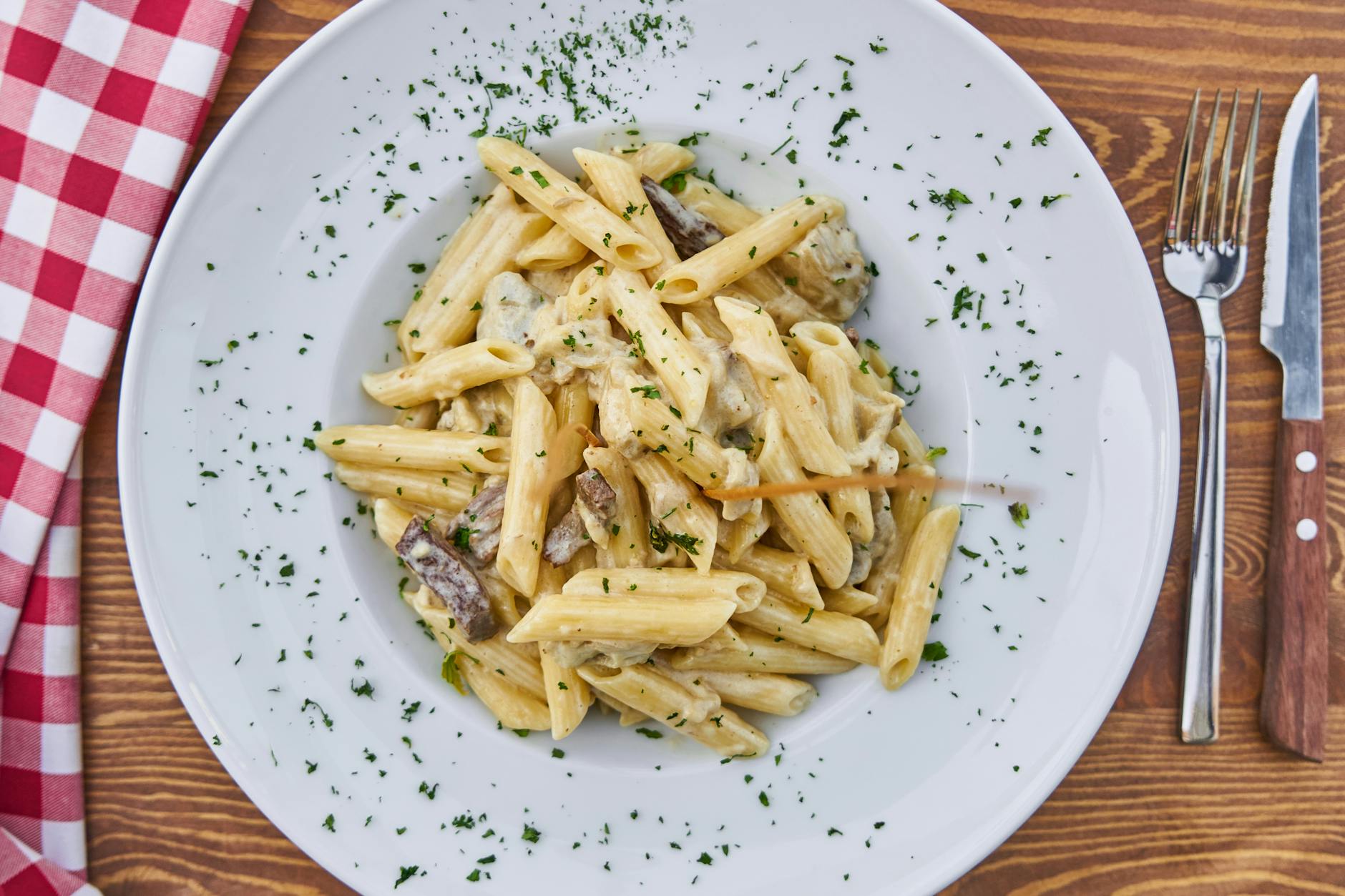
Italy is a cheese lover’s paradise! They produce hundreds of different types of cheese, each with its unique texture, flavor, and history. Some of the most popular Italian cheeses include:
- Mozzarella: This soft, milky cheese is famous for its stretchy texture and is a key ingredient in pizza and caprese salad.
- Parmesan: This hard, aged cheese is known for its sharp, nutty flavor and is often grated over pasta dishes or used in risottos.
- Gorgonzola: This blue cheese has a pungent aroma and a creamy, slightly spicy flavor. It’s often enjoyed with fruit and honey or melted into sauces.
- Ricotta: This fresh, creamy cheese is made from sheep’s milk whey. It’s used in both sweet and savory dishes, like lasagna and cannoli.
- Provolone: This semi-hard cheese has a mild, smoky flavor and is often used in sandwiches or melted on top of grilled vegetables.
- Pecorino Romano: This sheep’s milk cheese has a salty, sharp flavor and is often used in pasta dishes like cacio e pepe.
Each region of Italy has its own signature cheeses, made with local milk and traditional methods, adding to the incredible diversity of Italian cuisine.
8. Gelato vs. Ice Cream:

Gelato may look like ice cream, but it’s a whole different experience! Here’s how they compare:
- Fat Content: Gelato has less butterfat than ice cream, making it lighter and denser.
- Air Content: Gelato is churned slower than ice cream, so it incorporates less air. This results in a smoother, creamier texture that melts in your mouth.
- Serving Temperature: Gelato is served at a slightly warmer temperature than ice cream, enhancing its flavors and aromas.
- Ingredients: Gelato is traditionally made with milk, sugar, and natural flavorings like fruit, nuts, and chocolate. Ice cream often uses cream and may contain artificial ingredients.
If you’re looking for a truly authentic Italian dessert, gelato is the way to go! Its intense flavors, creamy texture, and lower fat content make it a delicious and refreshing treat.
9. Coffee Culture:

Coffee isn’t just a beverage in Italy, it’s a way of life. Coffee bars, or “caffè,” are scattered throughout the country, and they’re where locals gather to socialize, catch up on gossip, and fuel up for the day.
The most popular coffee in Italy is espresso, a strong, concentrated shot that’s typically enjoyed quickly at the bar. It’s often served with a small glass of water to cleanse the palate. Cappuccino, a coffee drink made with espresso, steamed milk, and foam, is usually enjoyed only in the morning, as Italians believe that milk can be heavy on the stomach later in the day.
Coffee culture in Italy is about more than just the drink itself – it’s about the ritual, the atmosphere, and the social connection. Taking a quick break for an espresso is a cherished part of the Italian lifestyle.
Read More: 15 Food Lies You’ve Been Fed – Time to Get the Facts
10. “Al Dente” Perfection:
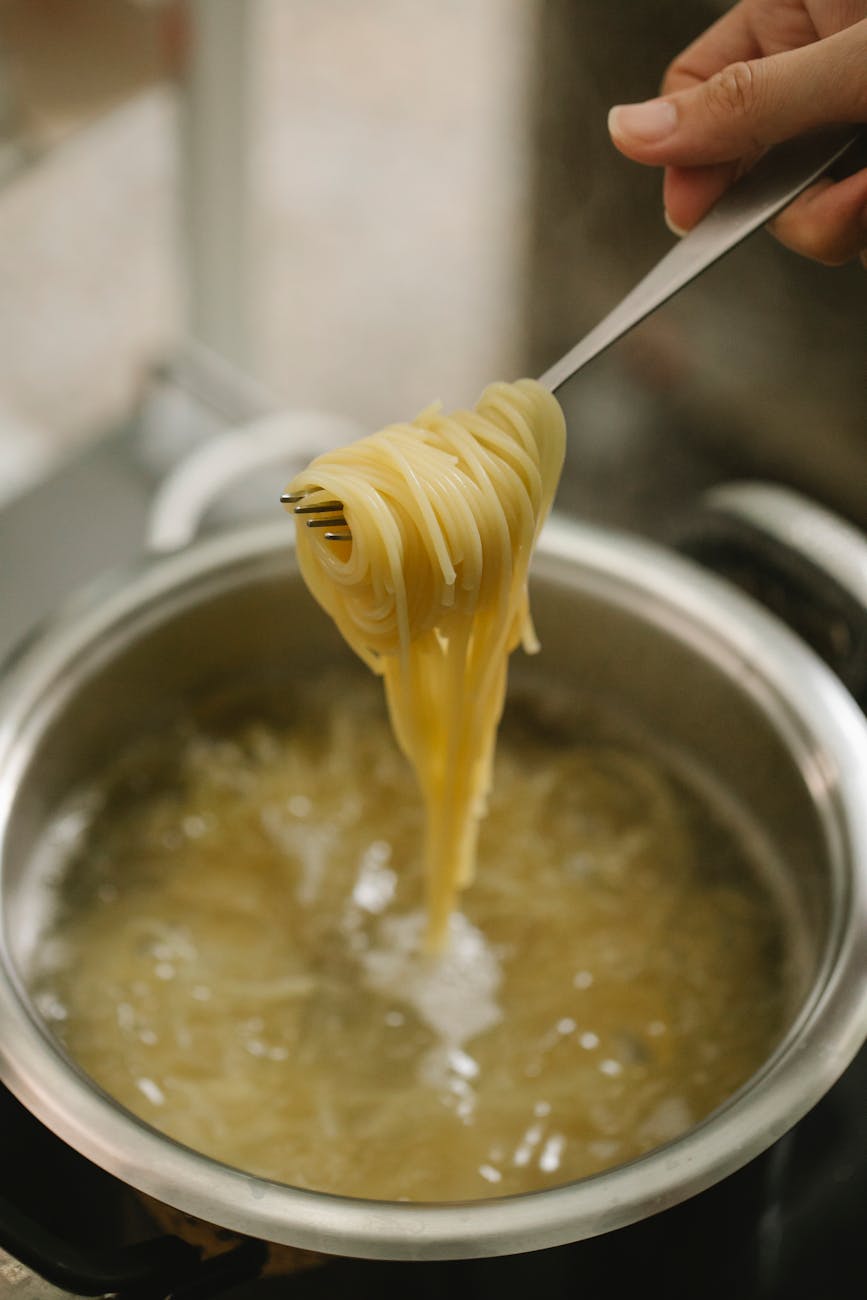
When Italians cook pasta, they don’t want it soft and mushy. They aim for “al dente,” which translates to “to the tooth.” This means the pasta is cooked until it’s firm but still slightly tender, with a slight bite to it.
Cooking pasta al dente is essential for several reasons:
- Texture: Al dente pasta has a pleasant, chewy texture that complements the sauce.
- Flavor: Al dente pasta holds onto sauces better, allowing the flavors to mingle more effectively.
- Digestion: Al dente pasta is easier to digest than overcooked pasta, as it has a lower glycemic index.
To achieve al dente perfection, Italians follow a few simple rules:
- Use plenty of water: The pasta should have plenty of room to move around in the pot.
- Salt the water generously: Salted water flavors the pasta as it cooks.
- Don’t overcook: Start tasting the pasta a few minutes before the recommended cooking time to ensure it doesn’t get mushy.
11. Freshness is Key:
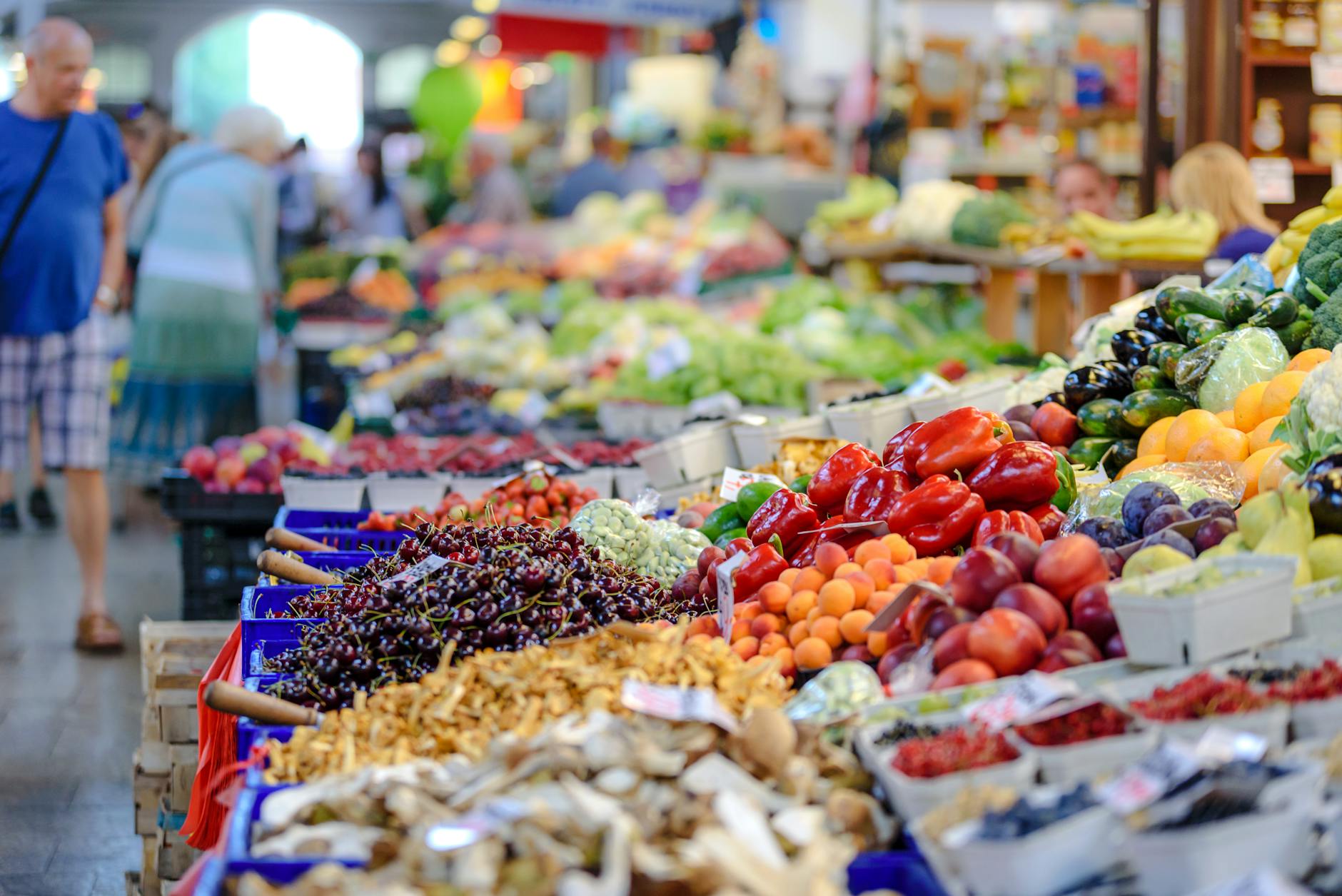
In Italian cuisine, fresh, seasonal ingredients are king. Italians have a deep respect for the land and its bounty, and they believe that the best-tasting food comes from what’s in season at that moment.
Markets in Italy are a feast for the senses, overflowing with vibrant fruits, vegetables, herbs, and freshly caught seafood. Chefs often create their menus based on what’s available that day, ensuring that every dish is bursting with the flavors of the season.
This focus on freshness not only enhances the taste of Italian food, but it also reflects their commitment to sustainability and local agriculture. By eating what’s in season, they support local farmers and reduce the environmental impact of transporting food over long distances.
12. Meals are an Event:

In Italy, meals are more than just a way to nourish the body – they’re a celebration of life, family, and togetherness. Whether it’s a simple weeknight dinner or a festive holiday feast, meals are a time to slow down, savor each bite, and connect with loved ones.
Italian meals often consist of multiple courses, starting with an antipasto (appetizer), followed by a primo (first course, usually pasta or rice), a secondo (main course, often meat or fish), and a dolce (dessert). Wine is usually served throughout the meal, and coffee is enjoyed at the end.
Conversation flows freely, stories are shared, and laughter fills the air. Meals can easily last for hours, as Italians believe that food is best enjoyed when shared with good company.
Read More: Discover the Delicious World of Spanish Food: Facts, Flavors, and FAQs
13. Bread is Sacred:
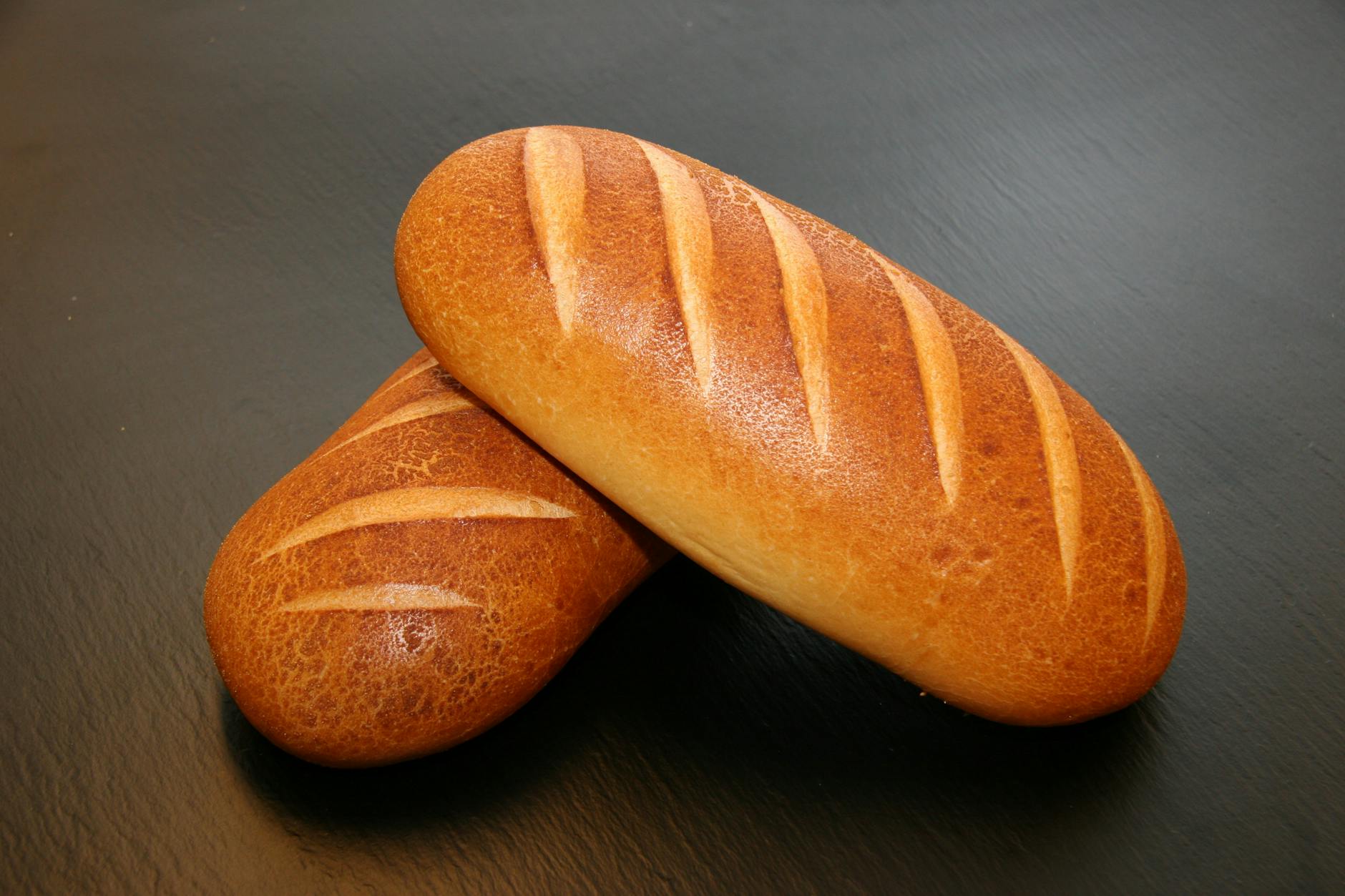
In Italy, bread isn’t just a side dish – it’s a fundamental part of every meal. From crusty loaves to soft focaccia, bread is always present on the table, serving a variety of purposes:
- Accompaniment: Bread is eaten alongside most dishes, providing a neutral base to balance the flavors and textures of the meal.
- Sauce Sopper: Italians use bread to mop up every last drop of sauce, a practice known as “fare la scarpetta” (making the little shoe). This ensures that no deliciousness goes to waste.
- Bruschetta Base: Sliced bread is often grilled or toasted and topped with fresh tomatoes, garlic, basil, and olive oil to create the classic appetizer bruschetta.
- Panini Filling: Crusty rolls are the foundation of panini, Italian sandwiches filled with cured meats, cheese, and vegetables.
Bread is so important in Italian culture that it’s considered a symbol of hospitality and generosity. Offering bread to guests is a way of welcoming them into your home and sharing your abundance.
14. Simplicity Shines:
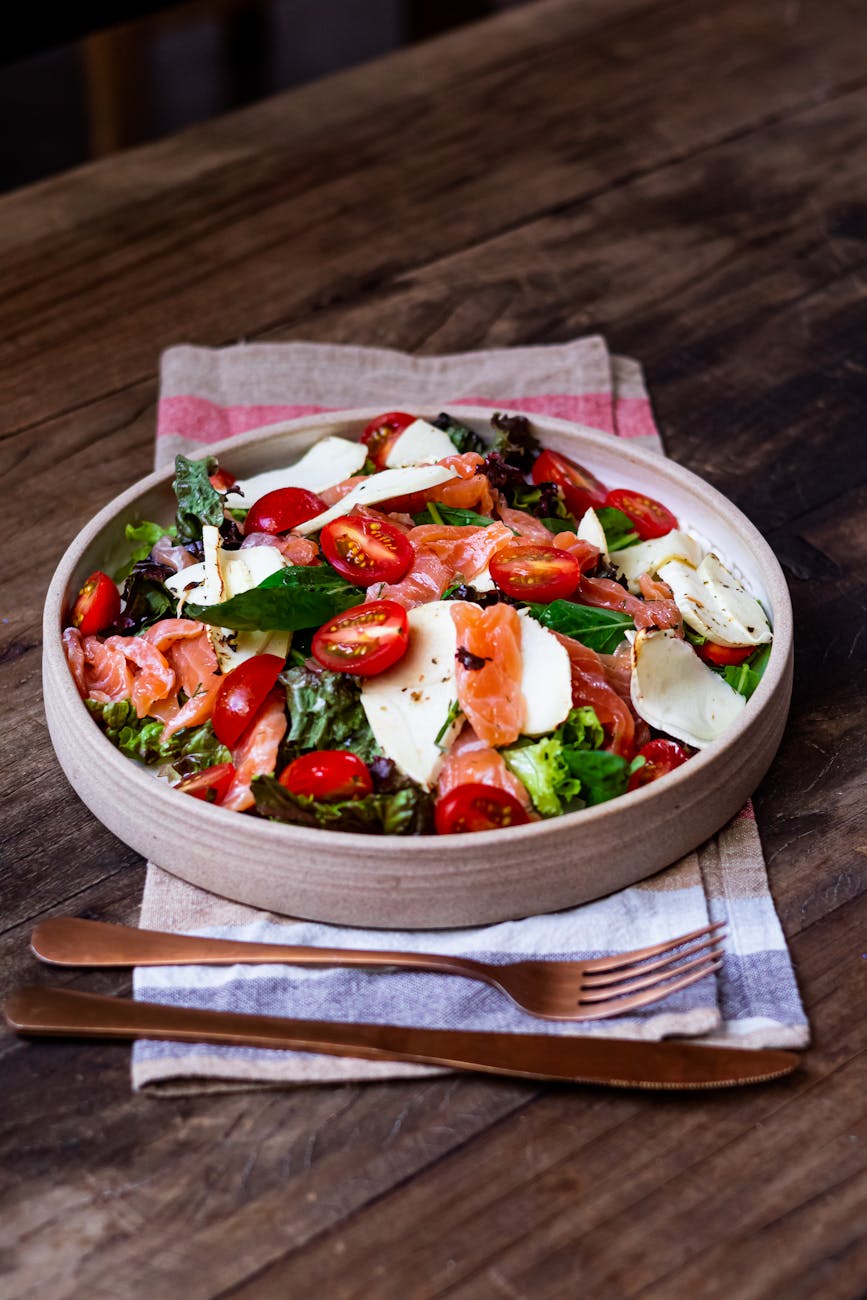
Some of the most iconic Italian dishes are surprisingly simple. They rely on just a few high-quality ingredients, expertly combined to create extraordinary flavors. This philosophy of simplicity is rooted in the Italian belief that fresh, flavorful ingredients should be allowed to shine on their own.
A few examples of this culinary minimalism include:
- Cacio e Pepe: This Roman pasta dish is made with just three ingredients: pasta, Pecorino Romano cheese, and black pepper. The starchy pasta water creates a creamy sauce that coats the noodles, while the cheese and pepper provide a sharp, salty bite.
- Caprese Salad: This refreshing salad showcases the vibrant flavors of summer. It’s made with thick slices of fresh mozzarella, juicy tomatoes, and fragrant basil leaves, all drizzled with olive oil and a sprinkle of salt.
- Spaghetti Aglio e Olio: This simple yet satisfying dish is made with spaghetti tossed in a garlicky olive oil sauce with a touch of red pepper flakes for heat.
These dishes prove that sometimes less is more when it comes to creating delicious food.
15. World Influence:
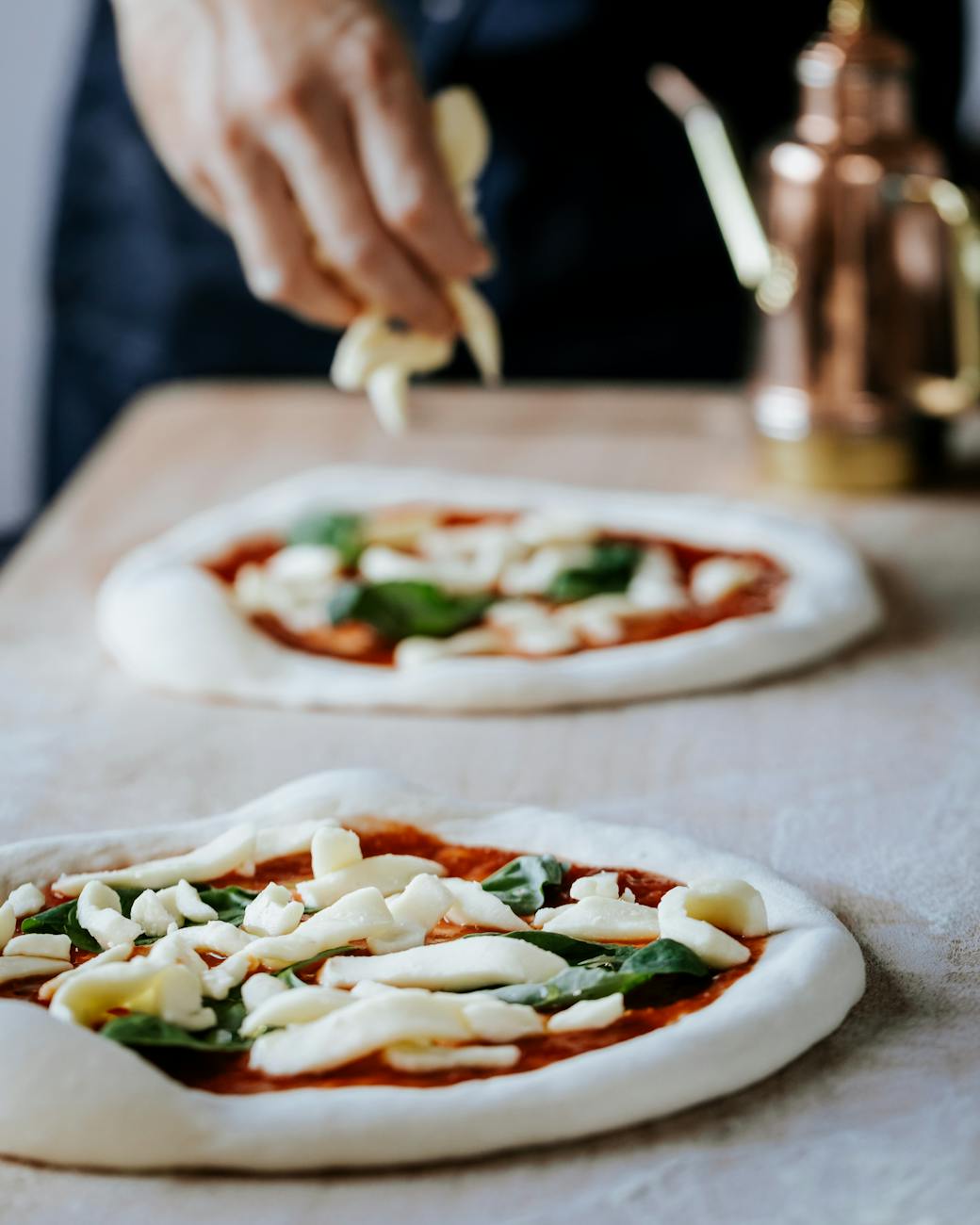
Italian cuisine has conquered the world! Its influence can be seen in restaurants, cafes, and home kitchens across the globe. Some of the most beloved Italian dishes that have become international favorites include:
- Pizza: This Neapolitan invention is now enjoyed worldwide, with countless variations and toppings.
- Pasta: Spaghetti, lasagna, ravioli – these pasta dishes have become staples in many cultures.
- Gelato: This creamy Italian frozen dessert has gained popularity worldwide, with artisanal gelaterias popping up in cities everywhere.
- Espresso: The Italian espresso has become the standard for coffee lovers around the world.
But the influence of Italian cuisine goes beyond just these iconic dishes. Italian culinary techniques, like slow cooking, braising, and using fresh, seasonal ingredients, have been adopted by chefs and home cooks everywhere. The Italian passion for food, their respect for tradition, and their emphasis on simplicity have all contributed to shaping the way we think about and enjoy food today.
Read More: Top 15 Facts: Fun Food Discoveries That Will Surprise You
Conclusion:
From its humble beginnings as peasant food to its current status as a global culinary icon, Italian cuisine is a testament to the power of simplicity, fresh ingredients, and a deep respect for tradition. Its regional diversity, rich history, and emphasis on shared meals make it more than just a cuisine – it’s a way of life.
Whether you’re savoring a classic Neapolitan pizza, twirling a forkful of spaghetti carbonara, or indulging in a creamy scoop of gelato, Italian food is an experience that nourishes both body and soul. Its influence can be felt in kitchens around the world, inspiring chefs and home cooks alike to create dishes that are simple, flavorful, and made with love.
15 FAQs About Italian Food:
-
What is the most popular Italian food?
Pasta takes the crown as the most beloved Italian food. With hundreds of shapes and countless sauce combinations, there’s a pasta dish to satisfy every palate. Some of the most popular include spaghetti carbonara, lasagna, and fettuccine Alfredo.
-
What are some traditional Italian dishes?
Italy boasts a wide array of traditional dishes, each with its own regional flair. Here are a few must-try classics:
Pizza: This Neapolitan invention has become a global phenomenon, loved for its crispy crust, flavorful sauce, and endless topping possibilities.
Risotto: This creamy rice dish is a northern Italian specialty, made by slowly simmering Arborio rice in broth until it reaches a luxuriously creamy consistency.
Osso Buco: This hearty Milanese dish features veal shanks braised in white wine, vegetables, and broth until they’re meltingly tender.
Carbonara: This Roman pasta dish combines eggs, cheese, pancetta (cured pork belly), and black pepper to create a rich and flavorful sauce.
Tiramisu: This decadent dessert layers coffee-soaked ladyfingers with a creamy mascarpone cheese mixture and a dusting of cocoa powder. -
What is the difference between gelato and ice cream?
While both are frozen treats, gelato and ice cream have some key differences:
Fat Content: Gelato has less butterfat than ice cream, making it lighter and denser.
Air Content: Gelato is churned slower than ice cream, so it has less air and a smoother, creamier texture.
Serving Temperature: Gelato is served at a slightly warmer temperature than ice cream, enhancing its flavors and aromas. -
Is Italian food healthy?
Italian cuisine can be very healthy when you focus on fresh, whole ingredients and balanced portions. Dishes like grilled fish, vegetable-based soups, and salads are excellent choices. Lean proteins like chicken and beans, whole grains like brown rice and farro, and healthy fats from olive oil are also important components of a healthy Italian diet.
-
What are some popular Italian cheeses?
Italy is a cheese lover’s paradise! Here are a few of their most famous varieties:
Mozzarella: This soft, stretchy cheese is essential for pizza and caprese salad.
Parmesan: This hard, aged cheese is known for its sharp, nutty flavor and is often grated over pasta.
Gorgonzola: This blue cheese has a pungent aroma and a creamy, slightly spicy flavor.
Ricotta: This fresh, creamy cheese is made from sheep’s milk whey and is used in both sweet and savory dishes.
Provolone: This semi-hard cheese has a mild, smoky flavor and is often used in sandwiches.
Pecorino Romano: This sheep’s milk cheese has a salty, sharp flavor and is a popular ingredient in pasta dishes. -
What is the difference between Italian and American pizza?
While both are delicious, Italian and American pizza have some key differences:
Crust: Italian pizza typically has a thin, crispy crust that’s cooked in a wood-fired oven. American pizza often has a thicker, doughy crust.
Sauce: Italian pizza sauce is usually made with simple ingredients like crushed tomatoes, garlic, and olive oil. American pizza sauce can be sweeter and may contain added herbs and spices.
Toppings: Italian pizza often features fewer toppings, focusing on quality ingredients like fresh mozzarella, basil, and prosciutto. American pizza is known for its abundance of toppings, from pepperoni and sausage to pineapple and jalapenos. -
What is the proper way to eat pasta in Italy?
Italians have a few rules when it comes to enjoying pasta:
No cutting: Pasta is never cut with a knife. Long noodles like spaghetti are twirled around a fork, while short pasta shapes like penne are scooped up with the fork.
No slurping: While slurping noodles is common in some cultures, it’s considered rude in Italy.
Sauce first: The pasta is always added to the sauce, not the other way around. This allows the noodles to coat evenly in the sauce.
No parmesan on seafood: Italians generally avoid adding Parmesan cheese to pasta dishes that contain seafood, as they believe it clashes with the delicate flavors. -
What are some typical Italian desserts?
Italy is famous for its delectable desserts. Here are a few popular choices:
Tiramisu: This creamy, coffee-flavored dessert is made with ladyfingers, mascarpone cheese, and cocoa powder.
Panna Cotta: This light and silky custard is made with cream, sugar, and gelatin. It’s often served with fruit or chocolate sauce.
Cannoli: These crispy pastry shells are filled with sweetened ricotta cheese and often dipped in chocolate chips.
Biscotti: These twice-baked cookies are perfect for dipping in coffee or dessert wine.
Sfogliatella: This flaky pastry is filled with a sweet ricotta cheese mixture and often flavored with citrus or cinnamon. -
What is the significance of food in Italian culture?
Food plays a central role in Italian culture, representing family, tradition, and community. Meals are a time for socializing, sharing stories, and strengthening bonds. Italians take great pride in their culinary heritage and enjoy passing down recipes and techniques from generation to generation. Food is seen as a source of pleasure, nourishment, and cultural identity.
-
Are there any vegetarian or vegan options in Italian cuisine?
Absolutely! While Italian cuisine is known for its meat and cheese-based dishes, there are plenty of vegetarian and vegan options to enjoy. Many pasta dishes, like pasta primavera (with vegetables) or pasta e fagioli (pasta and bean soup), are naturally vegetarian. Pizza can be topped with vegetables or vegan cheese alternatives. Salads, like caprese or panzanella, are refreshing and filling options. Many Italian restaurants are also happy to accommodate dietary restrictions and create custom dishes for vegetarian and vegan diners.
-
What is the best region in Italy for food?
Each region of Italy has its own culinary treasures, making it hard to choose just one! It really depends on your personal preferences.
*If you love seafood and sun-ripened flavors, head south to Sicily or Puglia.
*For hearty meat dishes and rich sauces, explore Tuscany or Emilia-Romagna.
*If fresh pasta and simple, elegant flavors are your thing, Rome and Bologna are great options.
No matter where you go in Italy, you’re sure to find delicious food that will tantalize your taste buds. -
What is the most expensive Italian food?
White truffles are often considered the most expensive Italian food. These rare and aromatic fungi are found in certain regions of Italy and are highly prized for their unique flavor. They can fetch exorbitant prices, sometimes thousands of dollars per pound.
-
What are some common Italian cooking techniques?
Italian cuisine relies on a variety of cooking techniques, including:
Sautéing: Quickly cooking ingredients in a pan with olive oil.
Braising: Slowly cooking meat or vegetables in liquid to make them tender.
Grilling: Cooking food over an open flame to achieve a smoky flavor.
Baking: Cooking food in an oven, often used for pizzas, breads, and desserts.
Frying: Cooking food in hot oil, often used for seafood and vegetables. -
What is the difference between Italian and French cuisine?
While both are renowned for their culinary traditions, Italian and French cuisine have some distinct differences:
Simplicity vs. Complexity: Italian cuisine often emphasizes simplicity, letting fresh, high-quality ingredients speak for themselves. French cuisine is known for its complex sauces and elaborate preparations.
Butter vs. Olive Oil: Italian cuisine relies heavily on olive oil, while French cuisine often uses butter for cooking and flavoring.
Pasta vs. Bread: Pasta is a staple in Italian cuisine, while bread plays a more prominent role in French cuisine.
Herbs and Spices: Italian cuisine typically uses fresh herbs like basil, oregano, and rosemary. French cuisine incorporates a wider range of herbs and spices, including thyme, tarragon, and lavender. -
What are some common Italian food misconceptions?
Italian food is all about pizza and pasta: While these are iconic dishes, Italian cuisine is incredibly diverse, with regional specialties ranging from seafood stews to polenta to stuffed vegetables.
Italian food is unhealthy: While some dishes can be heavy in carbs and fats, Italian cuisine also features plenty of fresh vegetables, lean proteins, and healthy fats from olive oil.
Italians eat spaghetti with meatballs: This dish is actually an American invention. In Italy, meatballs (polpette) are usually served as a separate course.
Italians drink cappuccino after dinner: Cappuccino is typically enjoyed only in the morning, as milk is considered heavy on the stomach later in the day.




